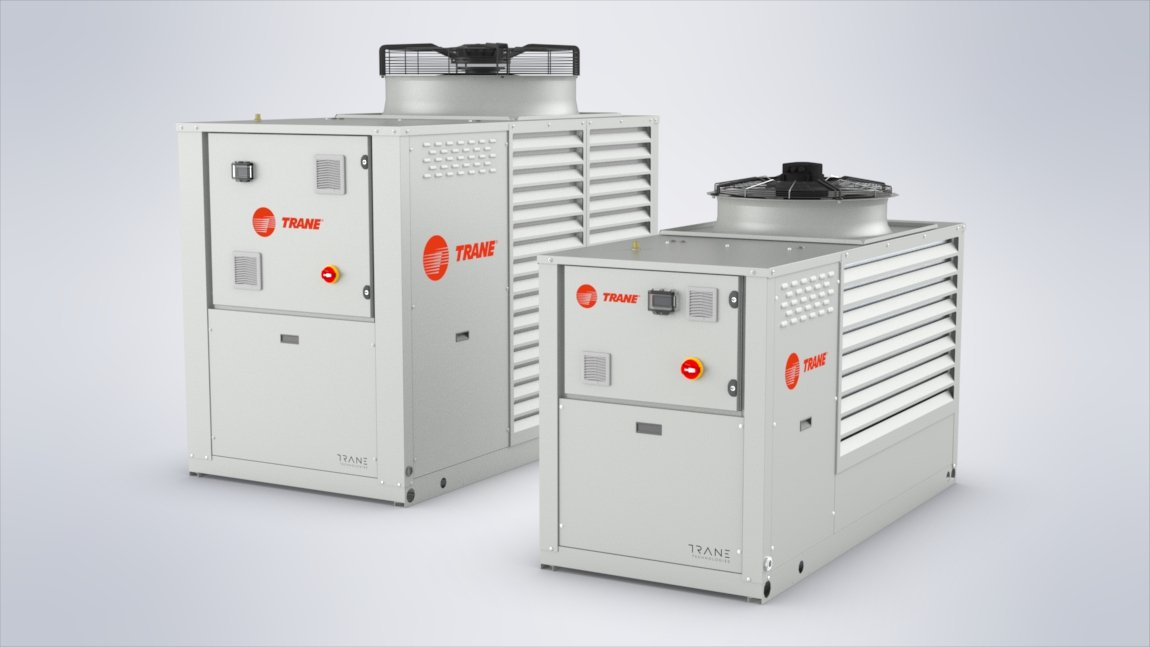Trane Launches Compact Heat Pumps with R454B and Wider Operating Range
Trane has introduced a new line of compact air-to-water heat pumps, the Cube CXC models, featuring inverter scroll compressors and low-GWP R454B refrigerant. Designed for commercial and public building applications, the CXC units offer heating capacities from 23 to 59 kW (6.5 to 16.8 tons) and deliver improved efficiency and installation flexibility.
The new models are positioned as an A2L refrigerant alternative to Trane’s existing R290-based Leaf range. The units operate with a leaving water temperature of up to 45°C (113°F) at -15°C (5°F) ambient, and produce sanitary hot water up to 60°C (140°F) during summer. They can also maintain 55°C (131°F) leaving water at ambient temperatures ranging from -2°C to 46°C (28°F to 115°F).
According to Trane, the combination of inverter technology, low-GWP refrigerant, and compact integrated design supports easier installation and helps reduce emissions from legacy heating systems. “The need for sustainable and efficient heating solutions has never been greater,” said Erik van Oossanen, product management leader for Trane in Europe, Middle East and Africa. “The Trane Cube CXC is the latest addition to our widest in the market range of low-GWP thermal management solutions.”
The Cube CXC heat pumps are engineered to support the decarbonisation of heating systems in existing buildings. Their compact footprint includes an integrated buffer tank and pump package, and the units handle up to 200 kPa external static pressure, expanding their installation options.
Key performance figures include:
-
Seasonal space heating energy efficiency above 154%.
-
Coefficient of performance (COP) up to 4.04.
These values may qualify the units for financial incentives and energy-saving schemes in various regions.
The use of R454B refrigerant, which has a significantly lower global warming potential compared to traditional options, is part of Trane Technologies’ broader sustainability efforts. The company aims to reduce customer greenhouse gas emissions by 1 billion metric tons by 2030 through its Gigaton Challenge.
By integrating high efficiency, adaptability, and refrigerants with lower environmental impact, the new CXC range aligns with global shifts toward low-carbon building technologies.
